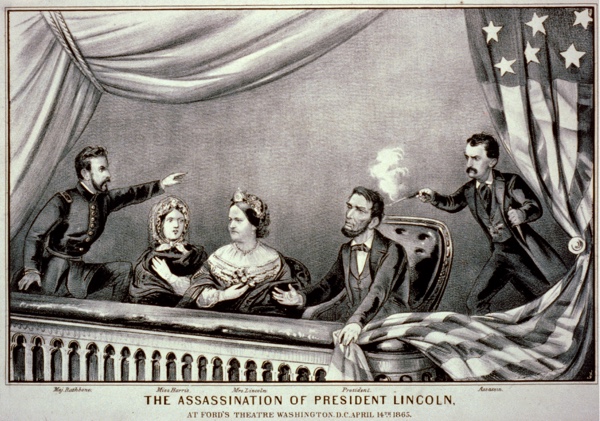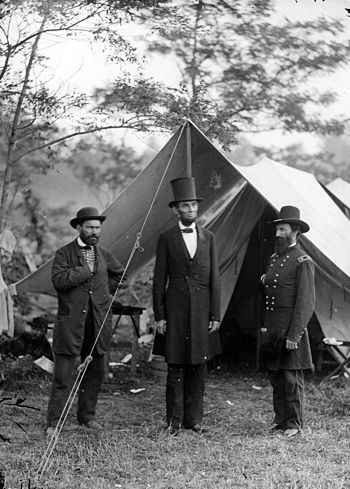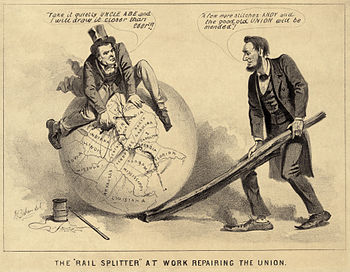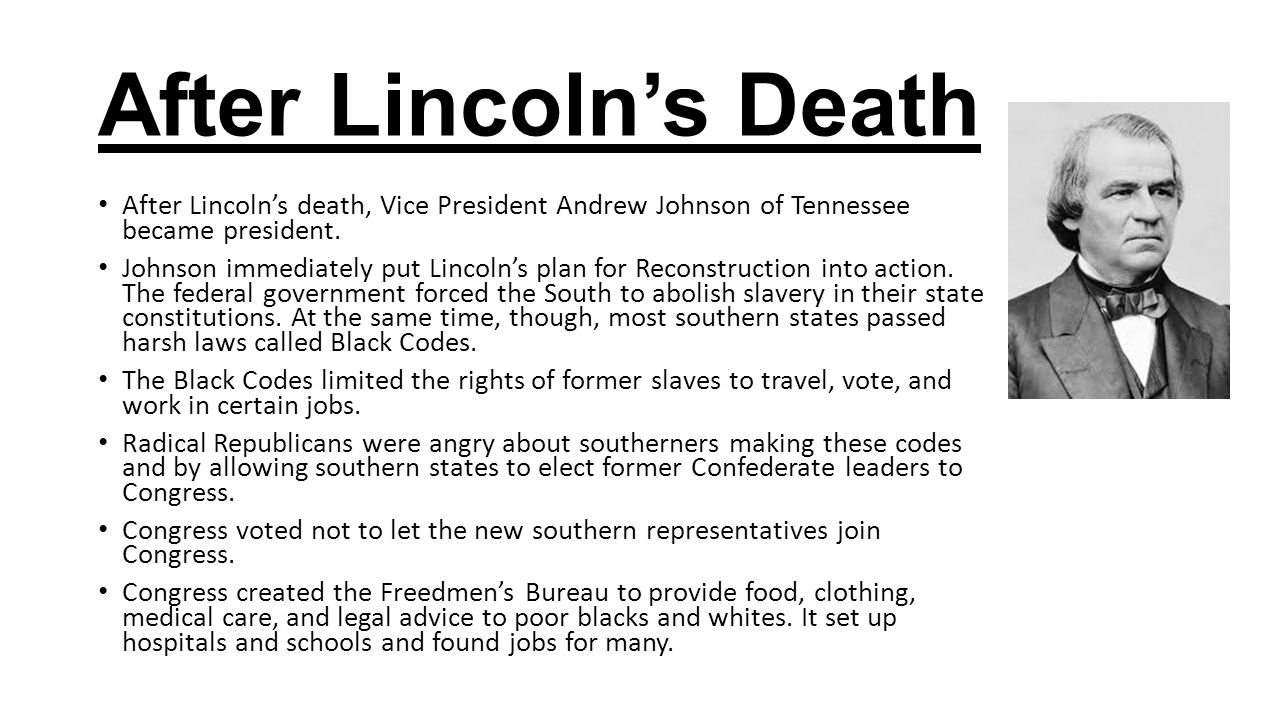How Did Lincoln’s Death Effect Reconstruction?

Original print; History News Network
The Murder of President Abraham Lincoln was a turning point in American history. He supported the most valuable idea of the 1860’s-70’s. He supported the idea that the country should maintain a unity with its states, occupants, and government. He valued the belief in having a strong governed country. Abraham Lincoln was the president during the Civil War and more specifically was commander in chief of the Union. He went to war with the Confederacy and died in creating a unity with the people of his country. He was a hero in American History and his death was a tragic disaster. His absence in the Reconstruction of The United States led to a series of unfortunate events. Without Abraham Lincoln the U.S. was unable to find an appropriate solution for the Reconstruction Era. If Lincoln had survived his plans for reconstruction would’ve created a successful up-rise from the war. He was truly an important figure in History.
Abraham Lincoln wanted to bring forth a united country. Even throughout the war all he wanted was to keep the country together. His death meant that the solution for reconstruction was open for someone else to impose. Lincoln’s plan was to allow the confederate states to reenter the union and was lenient towards punishment. He wanted 10% of the confederate states to take an oath of loyalty to re-join the union. He also provided amnesty for most soldiers but didn’t pardon high ranking Confederate officials. Lincoln’s plan for reconstruction would’ve led to a successful creation of a new Nation. Abraham Lincoln knew what it took to lead the nation and he also knew what the cost was. The South would never fully agree with the plans of The North. Anger and resentment was still evident in confederate loyalists. Radical republicans saw that and wanted to punish those who rebelled against the Union. Five districts were created within southern states. Each state had a Union military officer to oversee each district. This plan was put in action after the impeachment of President Johnson. Radical Republicans imposed a plan for reconstruction that was to extreme. Change must happen with time and patience, but the radicals wanted to maintain political control in the Southern States. Therefore, bringing Radical Reconstruction to the Nation Lincoln died for.

Radical Reconstruction was a flawed plan because it was too harsh the South. They forced change in the south causing resentment that would show later with time. Radical republicans wanted to destroy the political power of former confederate loyalists. They also wanted African Americans to be given full citizenship and the right to vote. These radical republicans then came to the South with the impression of helping the cause, but some really just wanted to exploit the South’s postwar turmoil. All these circumstances led to a great effort in forcefully destroying Southern beliefs which then caused a fatal tension between Northern beliefs and that of the South. The system was flawed and was theorized with a personal gain. Reconstruction was ended on the basis of political gain. Republicans ended reconstruction by offering southerners “an easy way out”. They offered to have military control in the districts pulled back, if the south voted for the Republican Rutherford Hayes as president. Change was imposed too rapidly and was not successful in permanently changing American life for the greater good. Change has to happen at a well-paced manner while teaching the reason for the need of change. Republicans couldn’t see past their own personal gain and failed in rebuilding the Nation. Therefore, creating an era of complete chaos over the fight for equality between all races.

Abraham Lincoln’s death marked and extending time period of racism, segregation, discrimination, and fight for equal rights under the constitution. Without Lincoln there to guide the United States through reconstruction, the United States took action on the issue at hand. Radical Republicans wanted to completely destroy the Confederacy’s power. They were resentful and angry against the South for separating from the Union and going to war. Radicals viewed the South as the cause for all the issues that were needed to be handled. Lincoln’s death allowed other government officials to lead the United States into reconstruction. There were many ideas or plans to rebuild the US but the one more people sided with was Radical Reconstruction, which was a form of harsh punishment for the South. This harsh treatment out Southerners caused the opposite of what they were trying to impose. Radicals made Southerners resentful instead of making them change in ideals. The purpose of reconstruction was to change the way people lived, what they believed in, and rebuild the nation into a stronger and more equal one. Instead reconstruction was ended early due to ‘dirty’ deals with political figures. Radicals offered independence to Southern states to govern themselves but in doing so, radicals didn’t realize they were ending reconstruction too quick and peoples’ way of living hadn’t changed yet. Racism between whites and blacks was still evident in the United States. All in all, Abraham Lincoln’s death led to radical reconstruction which was flawed and was ended ahead of time for political gain so it caused an enduring time period of fights for equal rights.
http://www.ushistory.org/us/35b.asp












